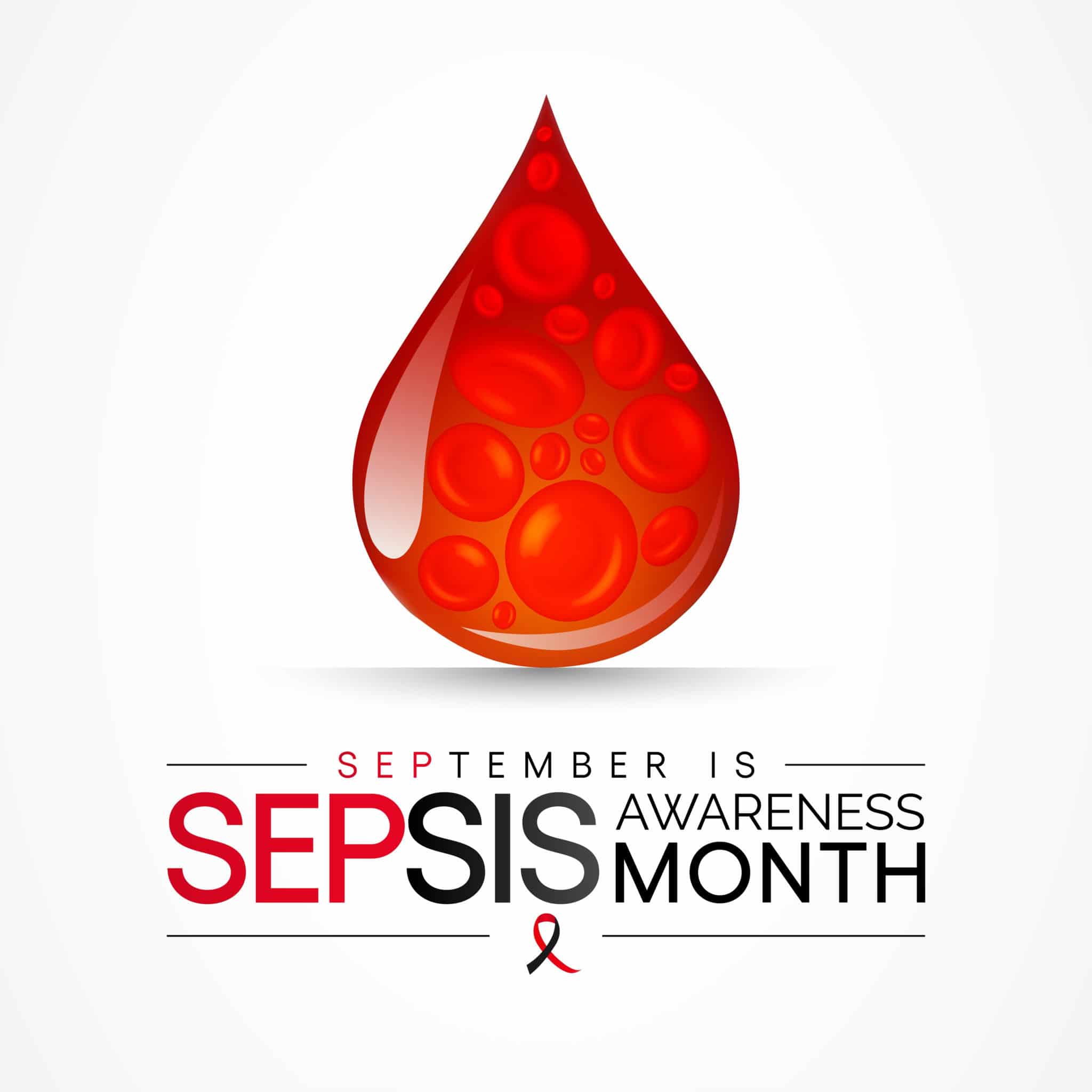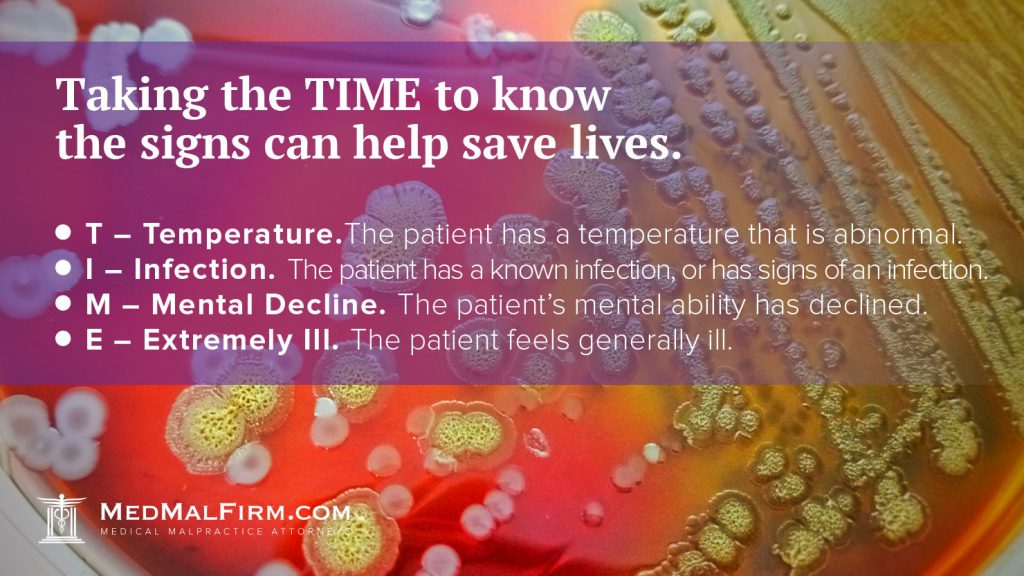
Sepsis Awareness Month: Join the Fight Against Sepsis
Each year, sepsis injures more than 1.7 million people. It results in more than 270,000 deaths in the United States alone. Consider this – in the time it has taken you to read this post,…
Each year, sepsis injures more than 1.7 million people. It results in more than 270,000 deaths in the United States alone. Consider this – in the time it has taken you to read this post, another person in the U.S. will be diagnosed with sepsis. September is Sepsis Awareness Month. At MedMalFirm.com, we want to help families understand sepsis, the risks, prevention, and where to get help. This illness is a real threat to the U.S. healthcare system. It is only through awareness and response that we can reduce the number of people who suffer the long-term and fatal consequences of this horrible condition.
1 in 3 patients in U.S. hospitals who die, have sepsis.
What is Sepsis?
Sepsis is not an infection, but is the body’s response to an infection. Infections that are not quickly or adequately treated can result in the body having an overwhelming response. Rather than fighting the infection, this response causes damage to the body. That is sepsis.
Infections that Lead to Sepsis
Any type of infection can lead to sepsis without adequate and timely treatment. Some of the more common infections include:
- Influenza
- Pneumonia
- COVID-19
- Urinary Tract Infection (UTI)
- Kidney or bladder infection
- Catheter sites
- Bloodstream infections
- Open wounds or burns
Without adequate treatment, any infection can cause the body to respond in a way that leads to sepsis. Without early detection, sepsis can lead to complications that affect the heart, lungs, brain, kidneys and other vital organs. It can also cause blood to clot abnormally, which can result in clots or burst blood vessels destroying or damaging tissues.
In around 40% of cases, sepsis leads to septic shock, a condition that causes dangerously low blood pressure. The lack of oxygen to the brain and vital organs is life-threatening and is a medical emergency. Septic shock has a high death (mortality) rate. Patients that survive often require surgery, organ transplant and amputation if gangrene has set in.
TIME to Know the Signs of Sepsis
The key to preventing the damaging or life-threatening side effects of sepsis is early detection and treatment. In fact, for every hour that treatment is delayed, the patient’s risk of death increases by 8%.
The Sepsis Alliance has created the TIME acronym to provide families with an easy way to identify the signs of sepsis. This is especially important for families and caregivers with a loved one over 65 years old, or who has an active infection.

Early detection and treatment of sepsis is critical. Estimates suggest that 80% of patient deaths could be prevented with early detection and adequate treatment. For healthcare providers, caregivers, and parents, knowing the signs is a critical part of helping save lives.
Sepsis and Children
While older adults and those with chronic illness are more susceptible to sepsis, children are also at risk. In fact, more children die from sepsis each year than pediatric cancers. Each year, more than 75,000 children develop sepsis. That equates to more than 200 children per day.
Be aware of the signs of sepsis in children, including:
- Abnormally cool to the touch
- Very pale or bluish skin
- Rash that does fade when pressure is applied
- Breathing rate is increased
- Convulsions (seizures)
- Lethargic or difficult to wake
Children under five years of age may also experience:
- Vomiting
- Decrease in urination
- Not eating
The Centers for Disease Control and Prevention (CDC) recommends that anyone who suspects a family member has sepsis to ACT FAST. Contact your healthcare provider immediately, or call 911 if they are very ill. Tell the healthcare provider or dispatcher that you believe the patient has sepsis. They will advise you on what to do next.
Long Term Effects
The mortality rate among patients with sepsis and septic shock is high. For patients that do survive, sadly, there are long-term effects that they may struggle with. The CDC reports the most common long-term effects among patients:
- Insomnia
- Nightmares or night terrors
- Panic attacks
- Disabling joint and muscle pain
- Decreased cognitive function
- Organ dysfunction
- Limb amputation leading to disability
Undiagnosed or Misdiagnosed Sepsis
Doctors that do not diagnose sepsis, or misdiagnose it, can cause patients to experience extreme pain and suffering, illness, and even death. If you or someone you love are experiencing side effects or consequences from undiagnosed or misdiagnosed sepsis or septic shock, you may find it helpful to contact a sepsis lawyer.
Failure to diagnose a medical condition or misdiagnosing a medical condition are both types of medical negligence. In these cases, you may have a medical malpractice claim. Contact MedMalFirm.com to speak with a lawyer and learn more.
You can also learn more by reviewing our content:
- WHO Global Report on Sepsis
- Sepsis a Factor in COVID-19 Deaths
- Rapid Diagnosis and Treatment of Sepsis Could Reduce Rates by 80%
- Texas Sepsis Care Study
- Nationwide Sepsis Care Study
- Study Reveals Dramatic Inadequacy of Sepsis Care in Hospitals
Sources:
